Cedar & Sweetgrass Banners, Stomata Spirals, Doreen’s sash
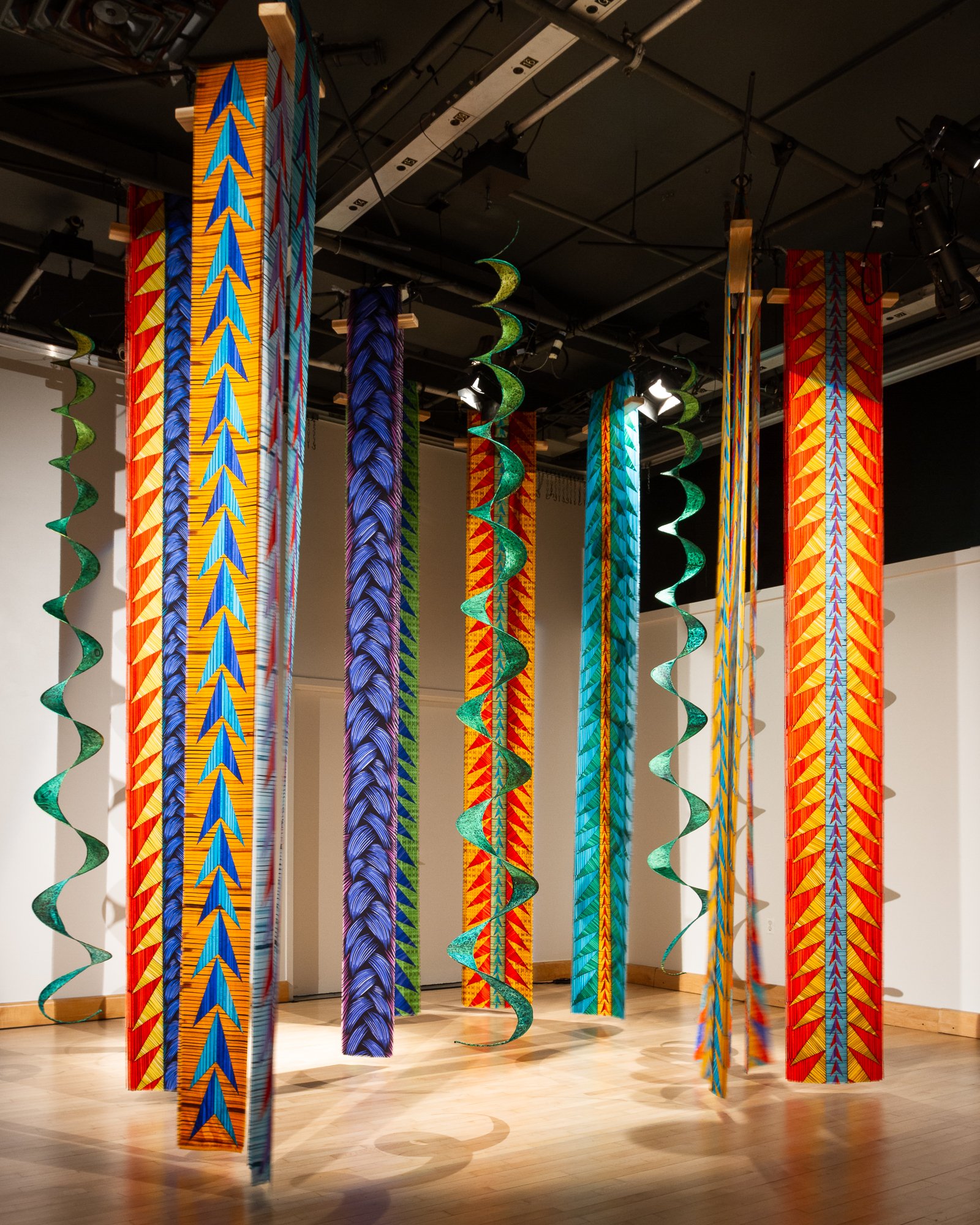

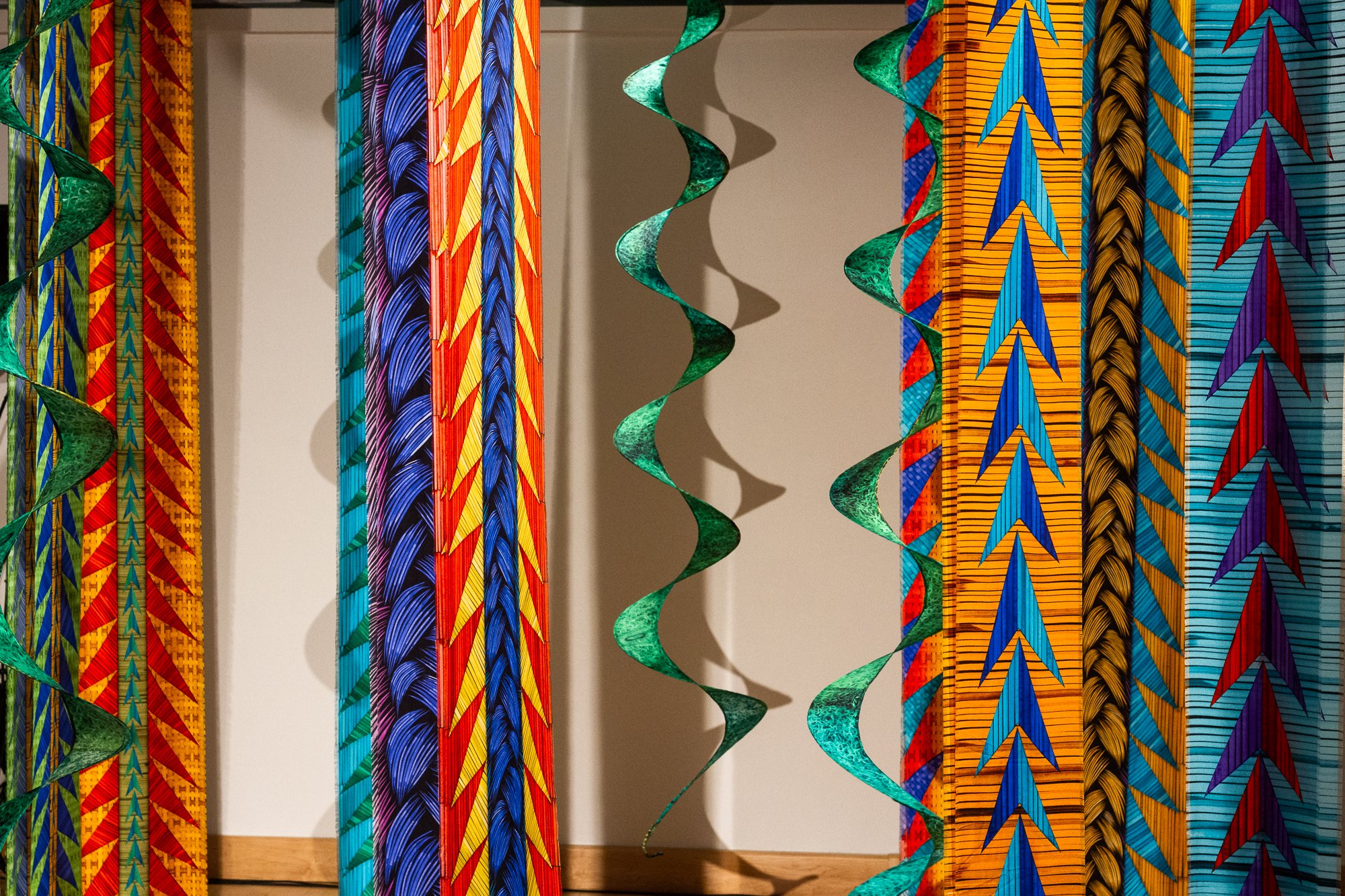
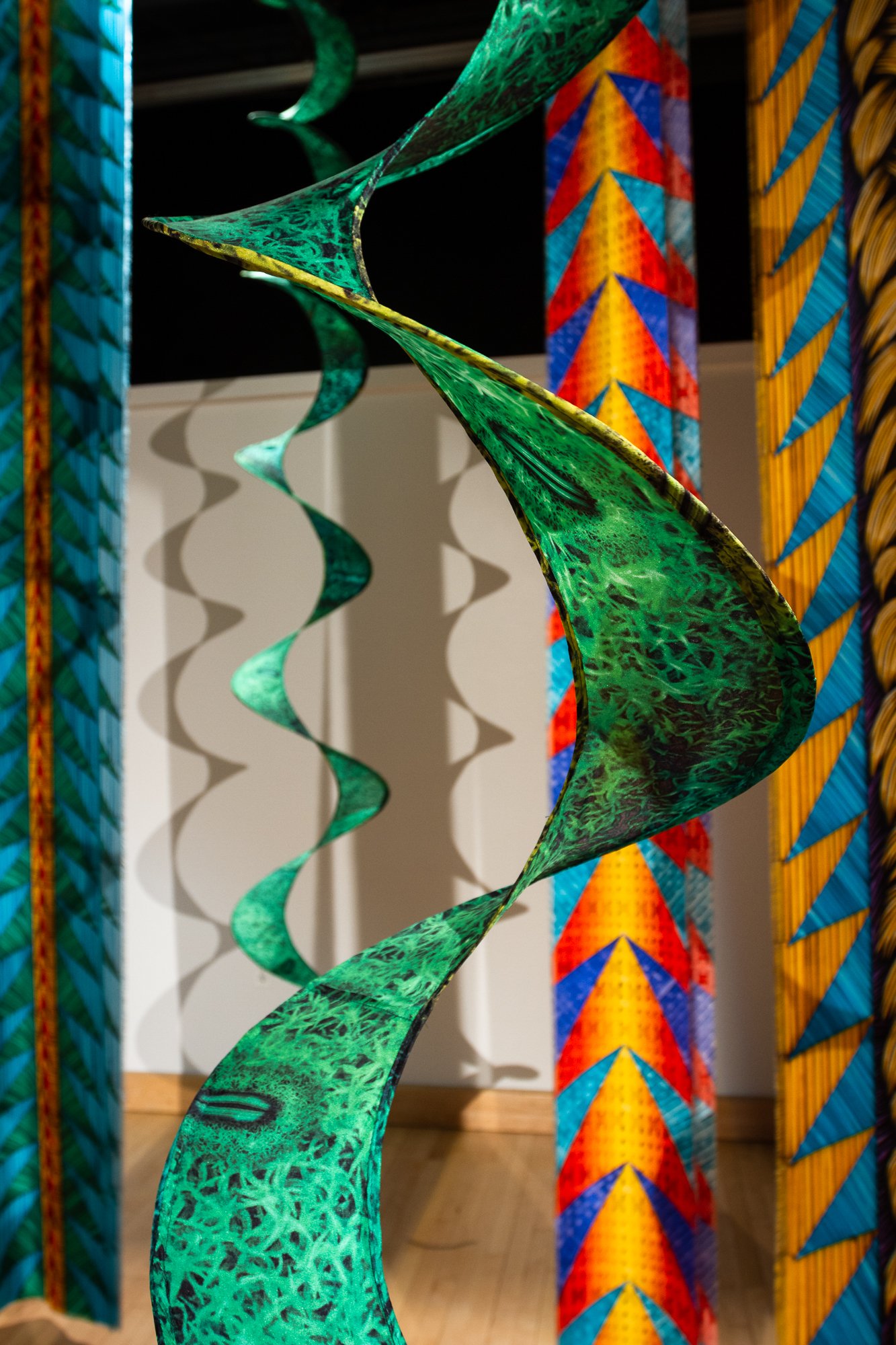
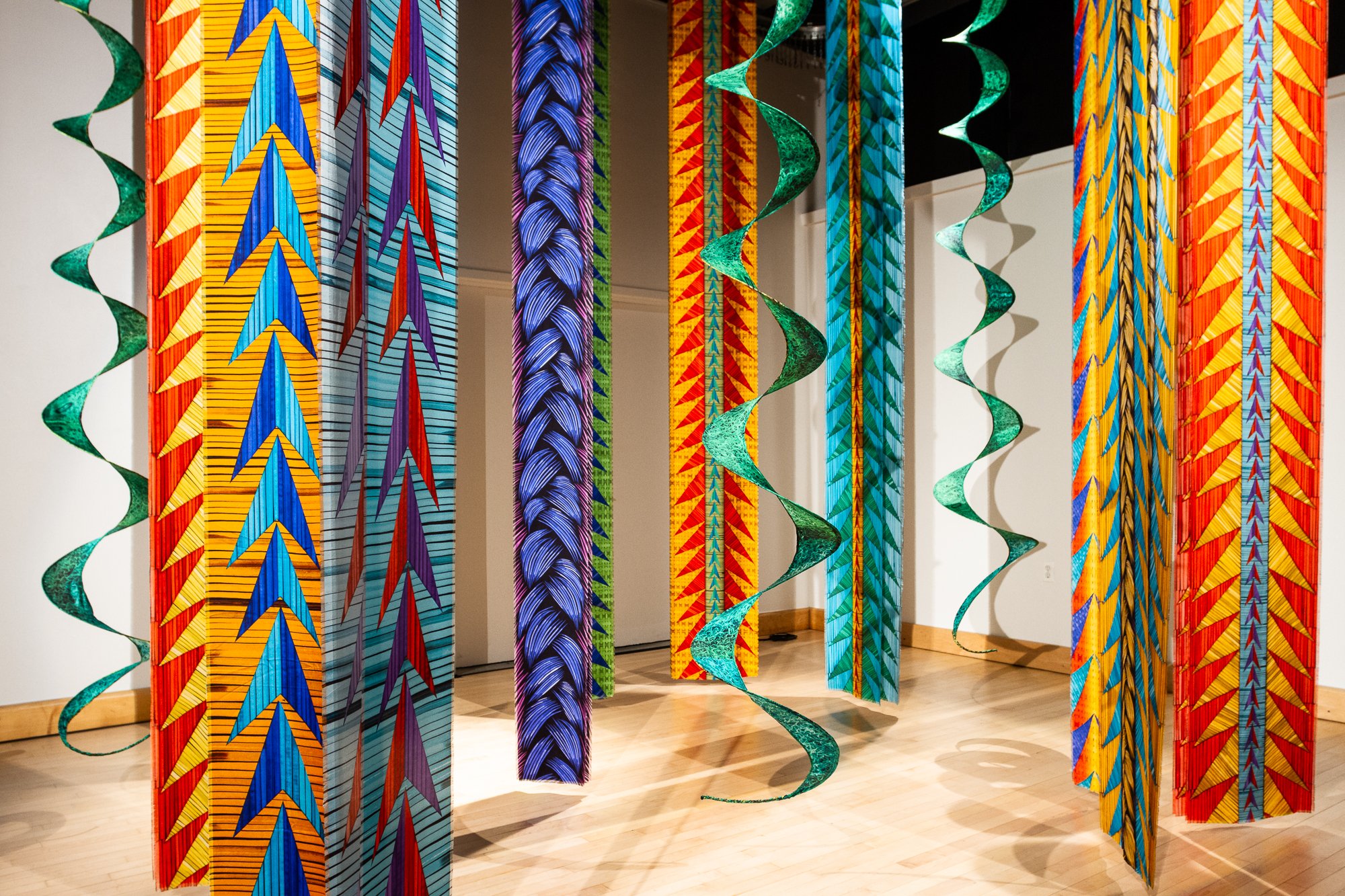
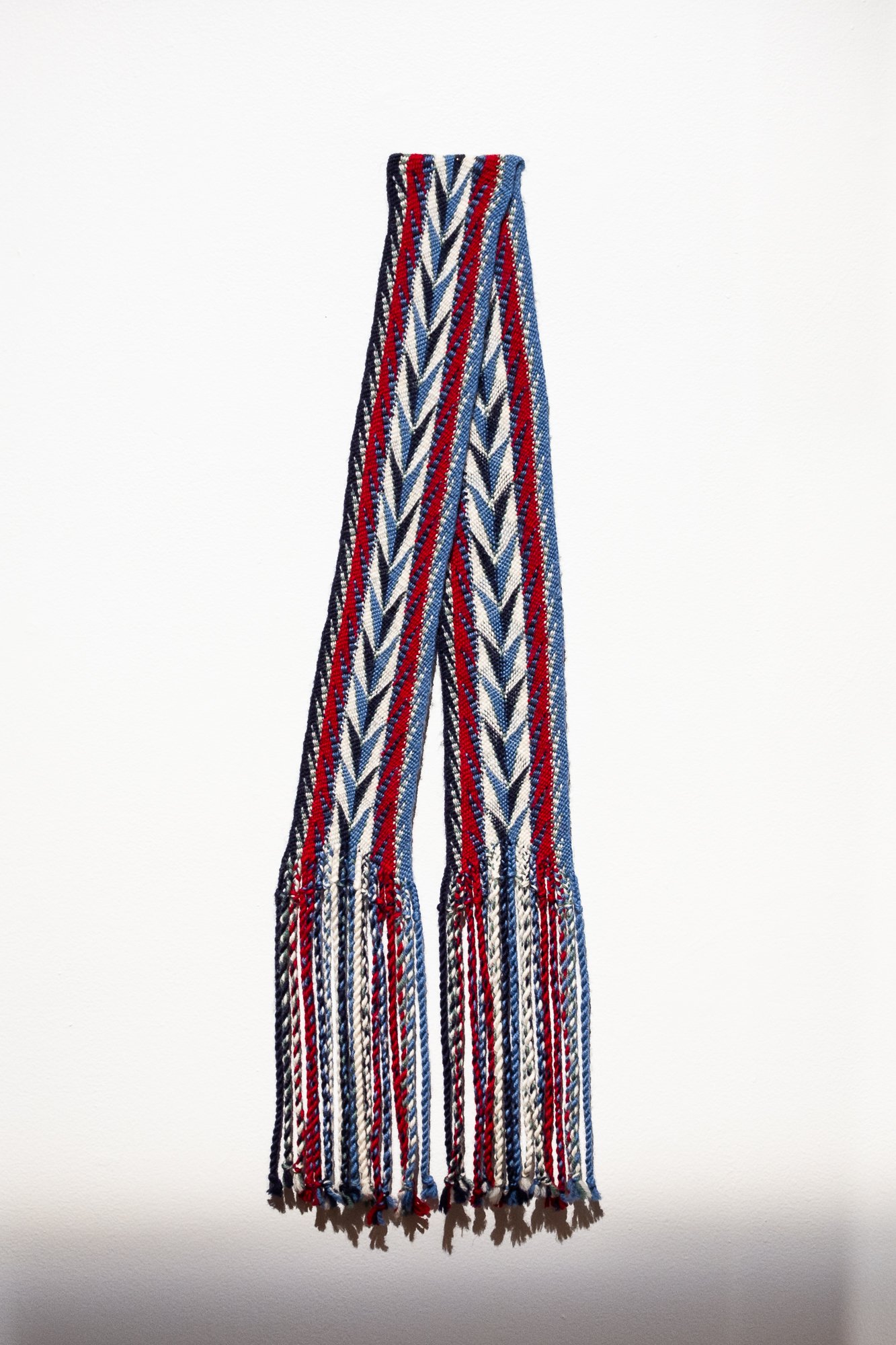
Cedar and Sweetgrass Banners
The ceiling-to-floor banners you are looking at feature digital collages made from individual photographs of porcupine quills. They are in part inspired by a ‘ceinture fléchée’ woven by my late, dear friend Doreen Page.
My great-grandfather wore a ceinture fléchée to reflect his Métis heritage. In turn, my sister and I wore that sash throughout our high school years; unfortunately it was lost, and today we regret ignoring Mom’s advice to guard it preciously.
Porcupine quills predated trade beads as forms of embellishment on Indigenous clothing and gear. My banners highlight cedar and sweetgrass as two of our Four Sacred Medicines. They celebrate our traditional practice of leaning into nature for grounding, guidance and healing. Today we hear a lot of talk about the concept of ‘forest bathing’ - something we’ve always known as ‘a walk in the woods’ or ‘spending time on the land’.
Doreen’s ‘Ceinture Fléchée’
The ‘ceinture fléchée’ you see here was woven by my late, dear friend Doreen Page. Unlike commercial designs, Doreen’s sash sports a centre-line design made of different shapes and colours and a soft edge. These features distinguish a sash as custom-made by a skilled artisan.
Colonists reportedly learned to make the ‘ceinture fléchée’ - the ‘arrowed sash’ - from the Indigenous people who inhabited so-called ‘New France’. The sash, which had multiple uses, became a symbol of Québécois, voyageur and Métis identity. The first commercial production was established in L’Assomption, Québec, hence the name ‘L’Assomption sash’.
Note on Spirals
The spirals that you see interspersed among the banners riff off scanning electron microscopy (SEM) photos of leaf stomata taken by renowned Washington climate-crisis activist, photographer and educator Robert Dash.
Stomata are mouth-shaped pores on the underside of leaves that take up carbon dioxide and release oxygen. Apart from supplying us with oxygen, plants also release volatile organic compounds (VOCs) through the stomata. Some of these phytochemicals, informally known as Vitamin N, create a sense of well-being when we are in nature.
(Factoid of interest to cannabis connoisseurs: in contrast to VOCs released in nature, VOCs emitted by urban pot farms, particularly terpenes, combine with car emissions and sunlight to actually worsen smog in cities.)
Robert Dash’s SEM images made me think of moss - the oldest plant on earth - and brought to mind VOCs swirling around in the moss-cloaked cedar forests of the Pacific Coast. I decided to represent this by using mini-motors to rotate the spirals, a perfect way to celebrate two plants that have lived as neighbours for millennia.
Special thanks to friend and neighbour Ann Hillyer for cutting and edging the banners.
Photo credit: Lina Samoukova
Video by Lina Samoukova